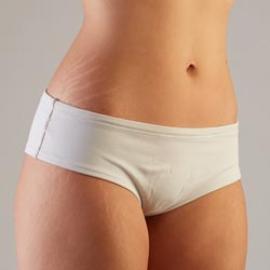
Today, around 50% of Asians are born with no palpebral folds on the upper eyelid. The remaining 50% do have them, but often they are not solid enough. As a consequence, their eyes appear to be closed, sad and tired.
In China, South Korea, or even Japan, for example, it is not rare to resort to cosmetic surgery to make your eyes look perfect. As a result, Asian blepharoplasty will make the eyes appear more round and restore vitality.
Asian blepharoplasty methods
The lack of palpebral folds in certain people can be explained by a defect of the levator muscle. This is the muscle that helps the eyelid to open and close. In certain cases, the muscle may be too low on the eyelid and there may also be signs of sagging skin and poor placement of the fat on the eyelids.
Asian blepharoplasty can reconstruct the palpebral fold at the level of the upper eyelid. This technique produces a fold on the upper eyelid and makes it possible to make a slight crease and adjust its placement.
Thus, the object of this procedure is to embellish and rejuvenate the eyes. The greatest challenge in this procedure is to keep the shape of the eye intact and not to change it.
Asian blepharoplasty: how does the treatment work
Before you undergo Asian blepharoplasty, the physician will see you for an initial consultation. The goal is to define your goals and needs for the process, but also to examine the area to be treated. This consultation will provide the physician with the opportunity to eliminate some contraindications that would prevent you from having this operation.
Several surgical techniques can be used based on the excess skin, but also on the fat tissue between the eyelashes and the palpebral folds:
- Incisions to be made: the surgeon creates a horizontal incision around the eyelids to create a crease. Then, he separates the skin from the orbicularis muscle. Then the eyelid is sutured, and the scars are concealed in the fold that is formed.
- Mini-incision: this procedure consists of making mini-incisions at the level of the desired palpebral fold. The surgeon performs sutures on each of the mini-incisions. However, this procedure can only be done in people who do not have excess skin and not a lot of fat in their tissues.
After surgery, the surgeon puts cold compresses on the eyes to reduce the risk of swelling and bruising. The stitches will be removed about five days after the operation, and you will have to rest for about ten days.
Asian blepharoplasty: anaesthetic, time period and hospitalisation details
Asian blepharoplasty is performed under local anesthesia and does not require hospitalization. It can also be done as an outpatient procedure and lasts approximately an hour.
Asian blepharoplasty: the results
Initial results are visible at the end of the procedure and are satisfactory in most instances.
After two months, the results are more noticeable and, after six months, more permanent when the swelling clears. The scars are invisible because they are concealed in the new palpebral folds that have been created.
The eyes will appear more open and more prominent and rounded. Your face is now going to look less tired and more toned.
Eyelids that have undergone Asian blepharoplasty are prone to the same effects of time as normal eyelids. As a consequence, signs of aging can be seen over time.
Asian blepharoplasty: Costs
The cost of Asian blepharoplasty varies depending on the technique used and the type of procedure needed.
Local / General anaesthetic
Same day clinic
|
Label colonne description
OTHER FEES
|
Label colonne tarifs
PRICES*
|
|---|---|
|
Description
Consultation with a surgeon |
Tarif
€50
|
|
Description
Consultation with an anaesthesiologist |
Tarif
€100
|
|
Description
Compression hosiery |
Tarif
€50
|
Make a Blepharoplasty Appointment
A consultation is required for new customers.




















































